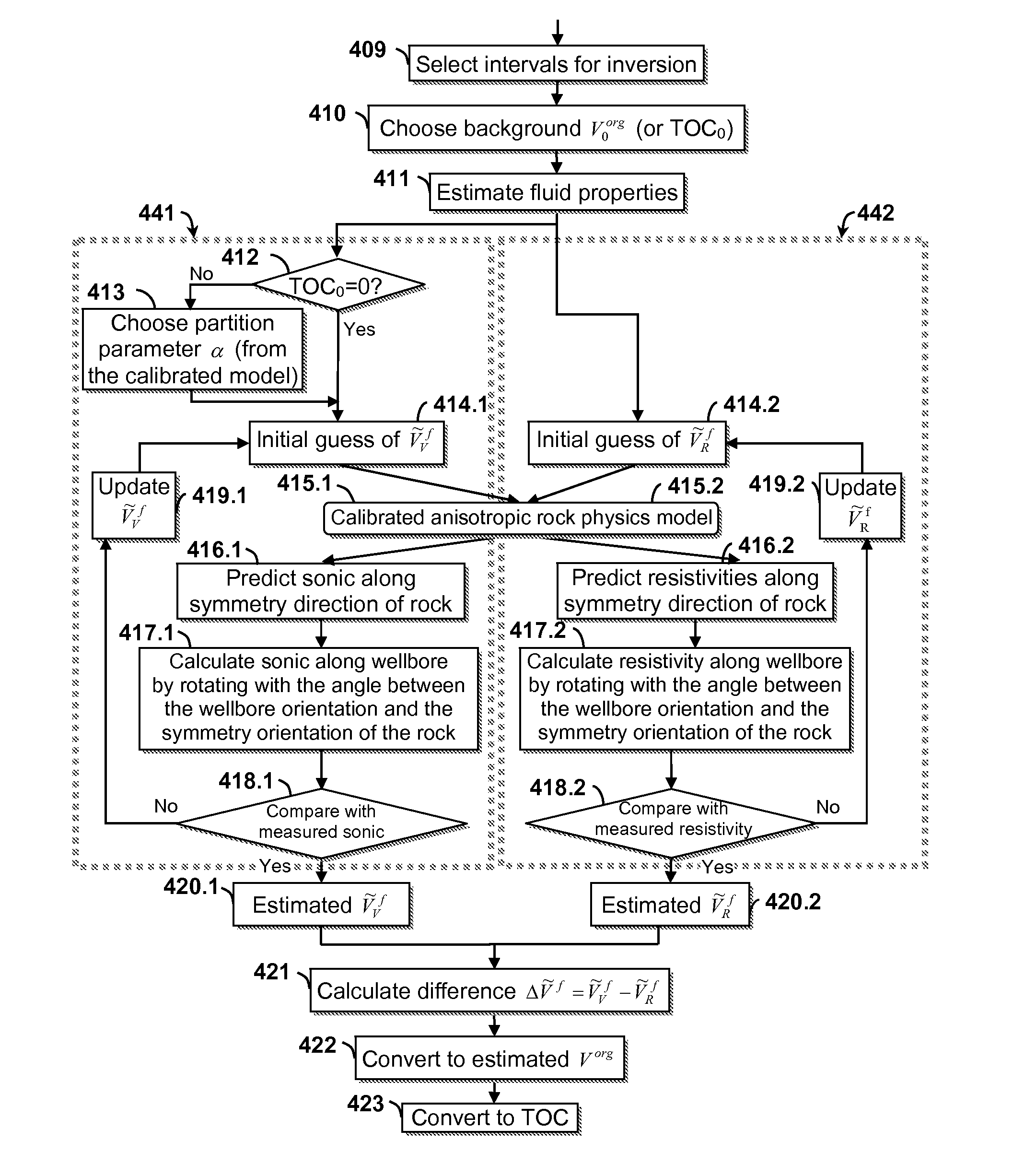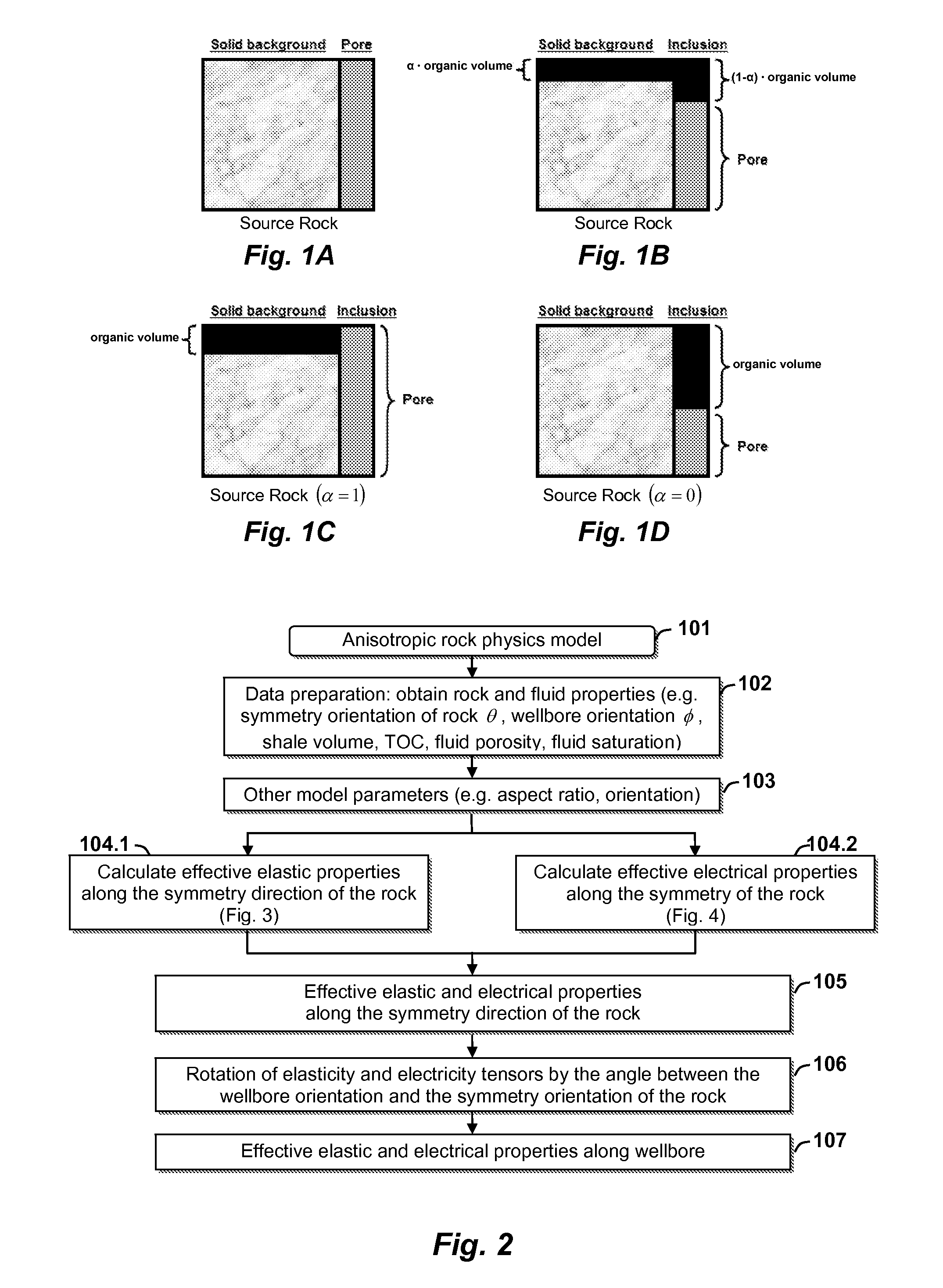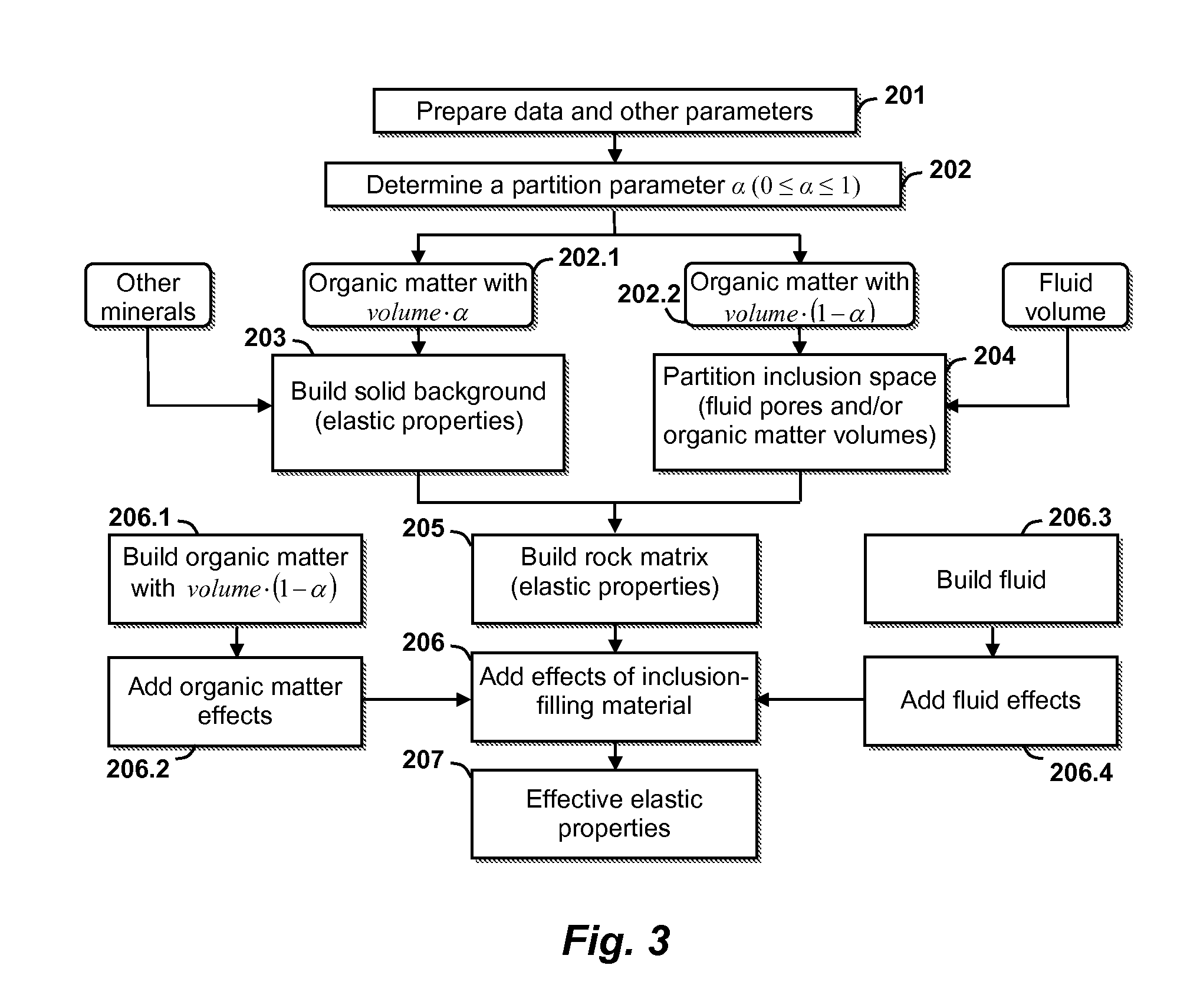Predicting anisotropic source rock properties from well data
a source rock and well data technology, applied in the field of geophysical prospecting, can solve the problems of high heterogeneity, complex micro-scale structures, and the inability to include organic matter in the physics of shale rock
- Summary
- Abstract
- Description
- Claims
- Application Information
AI Technical Summary
Benefits of technology
Problems solved by technology
Method used
Image
Examples
example
[0107]The result of applying rock physics modeling for a shale gas formation is shown in FIG. 6, where various quantities are plotted vs. depth. The left panel shows volumes of shale (Vshale, black curve) and calcite (Vcalcite, gray curve) that are obtained from petrophysical analysis. The second panel shows porosity (black curve, in volume percent) that indicates the volume concentration of fluids, and TOC (gray curve, in weight percent) that indicates the concentration of organic matter. Elastic properties of organic matter are obtained from an analog of coal material. The next three panels compare the log measurements (black) with two prediction results: prediction with (gray curves) and without (black dashed curves) the consideration of organic matter. The gray curves were generated by forward modeling using the present inventive method, with TOC derived from an independent analysis using formation evaluation technique. The log quantities shown are P-wave sonic transit time in u...
PUM
 Login to View More
Login to View More Abstract
Description
Claims
Application Information
 Login to View More
Login to View More - R&D
- Intellectual Property
- Life Sciences
- Materials
- Tech Scout
- Unparalleled Data Quality
- Higher Quality Content
- 60% Fewer Hallucinations
Browse by: Latest US Patents, China's latest patents, Technical Efficacy Thesaurus, Application Domain, Technology Topic, Popular Technical Reports.
© 2025 PatSnap. All rights reserved.Legal|Privacy policy|Modern Slavery Act Transparency Statement|Sitemap|About US| Contact US: help@patsnap.com



